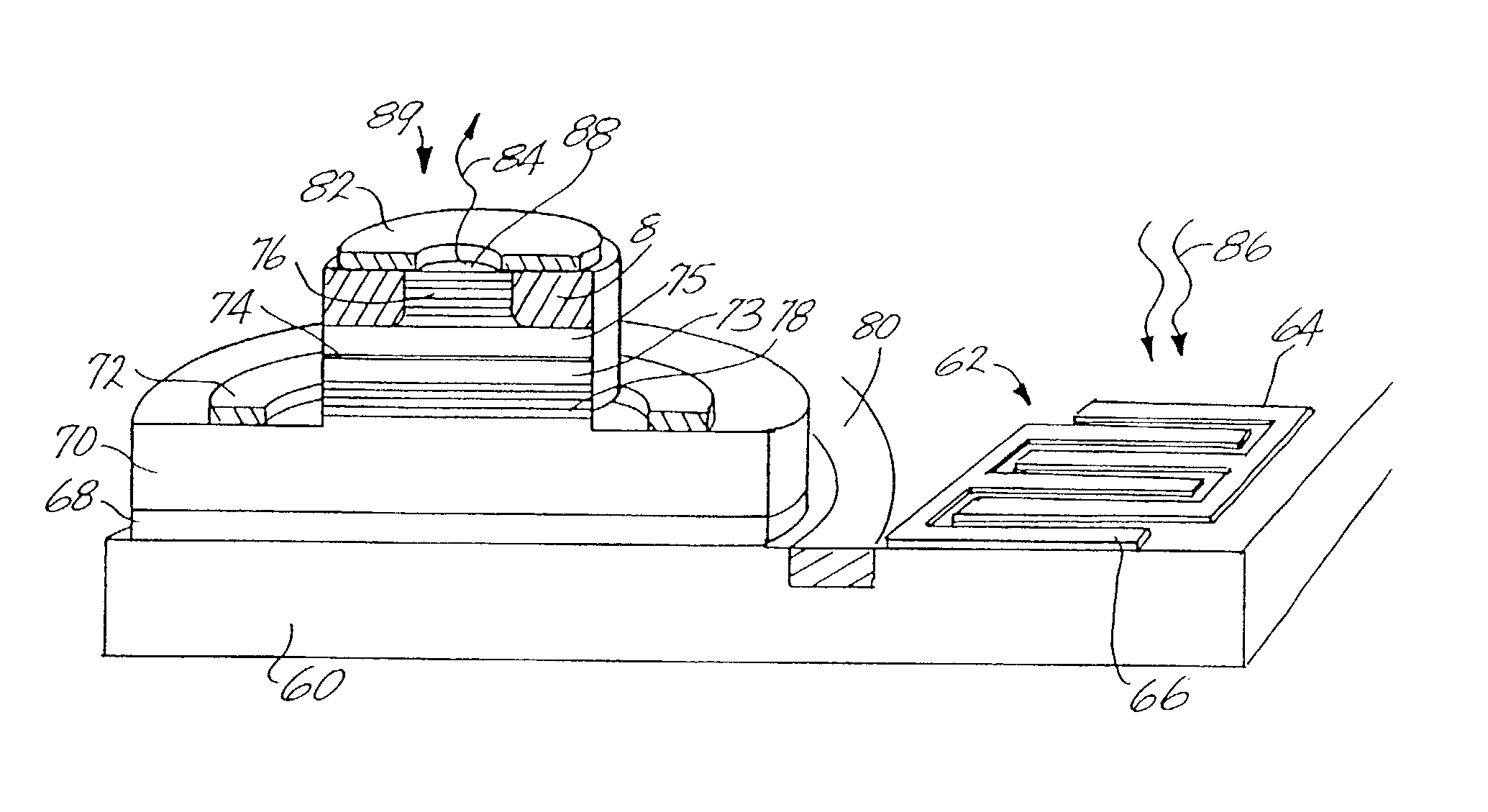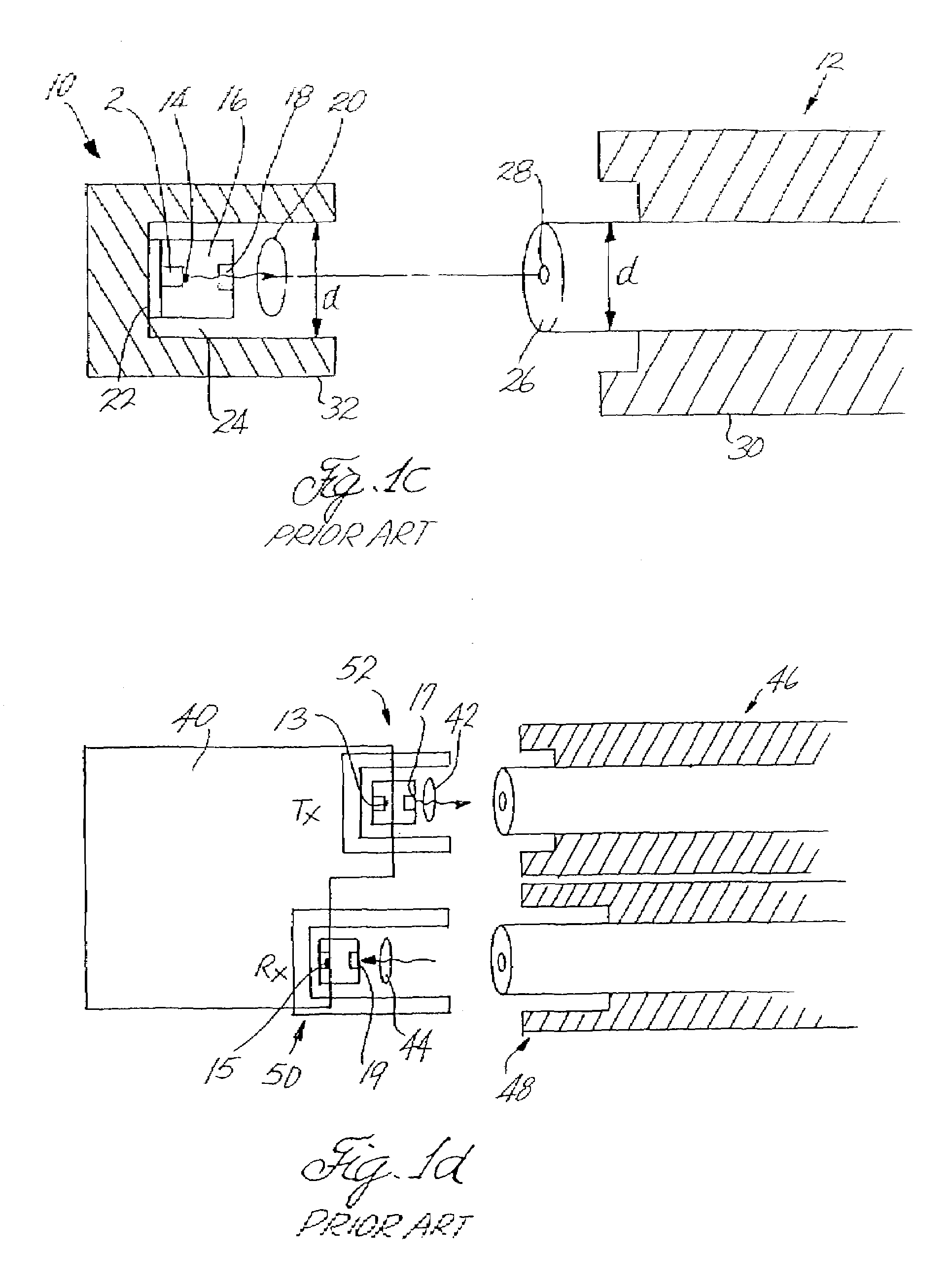Closely-spaced VCSEL and photodetector for application requiring their independent operation
a laser and photodetector technology, applied in the field of vertical cavity surface emitting lasers and photodetectors, can solve the problems of low cost of data transmit and receive components, and low cost of fiber installation, so as to avoid other bipolar parasitic effects, reduce the cost of installation, and reduce the cost of operation
- Summary
- Abstract
- Description
- Claims
- Application Information
AI Technical Summary
Benefits of technology
Problems solved by technology
Method used
Image
Examples
Embodiment Construction
[0081]The present invention generally pertains to a monolithic semiconductor device having a VCSEL integrated with a photodetector on the same substrate, wherein the VCSEL and photodetector are to be operated independently as transmit and receive devices respectively. The VCSEL and photodetector are physically situated in close enough proximity to permit packaging of one or more pairs of the VCSEL and photodetector such that they may be coupled to multifiber ferrules having fiber spacing on the order of 250 microns or less. The present invention also includes a method of manufacturing the independently operated VCSEL and photodetector, as well as the packaging and coupling of one or more pairs of the integrated VCSEL and photodetector to multifiber ferrules.
[0082]A first preferred embodiment of the invention is now discussed in detail in conjunction with FIGS. 3 and 4. As shown in FIG. 3, a VCSEL and a metal-semiconductor-metal (MSM) photodetector are integrated on the same semi-ins...
PUM
 Login to View More
Login to View More Abstract
Description
Claims
Application Information
 Login to View More
Login to View More - R&D
- Intellectual Property
- Life Sciences
- Materials
- Tech Scout
- Unparalleled Data Quality
- Higher Quality Content
- 60% Fewer Hallucinations
Browse by: Latest US Patents, China's latest patents, Technical Efficacy Thesaurus, Application Domain, Technology Topic, Popular Technical Reports.
© 2025 PatSnap. All rights reserved.Legal|Privacy policy|Modern Slavery Act Transparency Statement|Sitemap|About US| Contact US: help@patsnap.com



